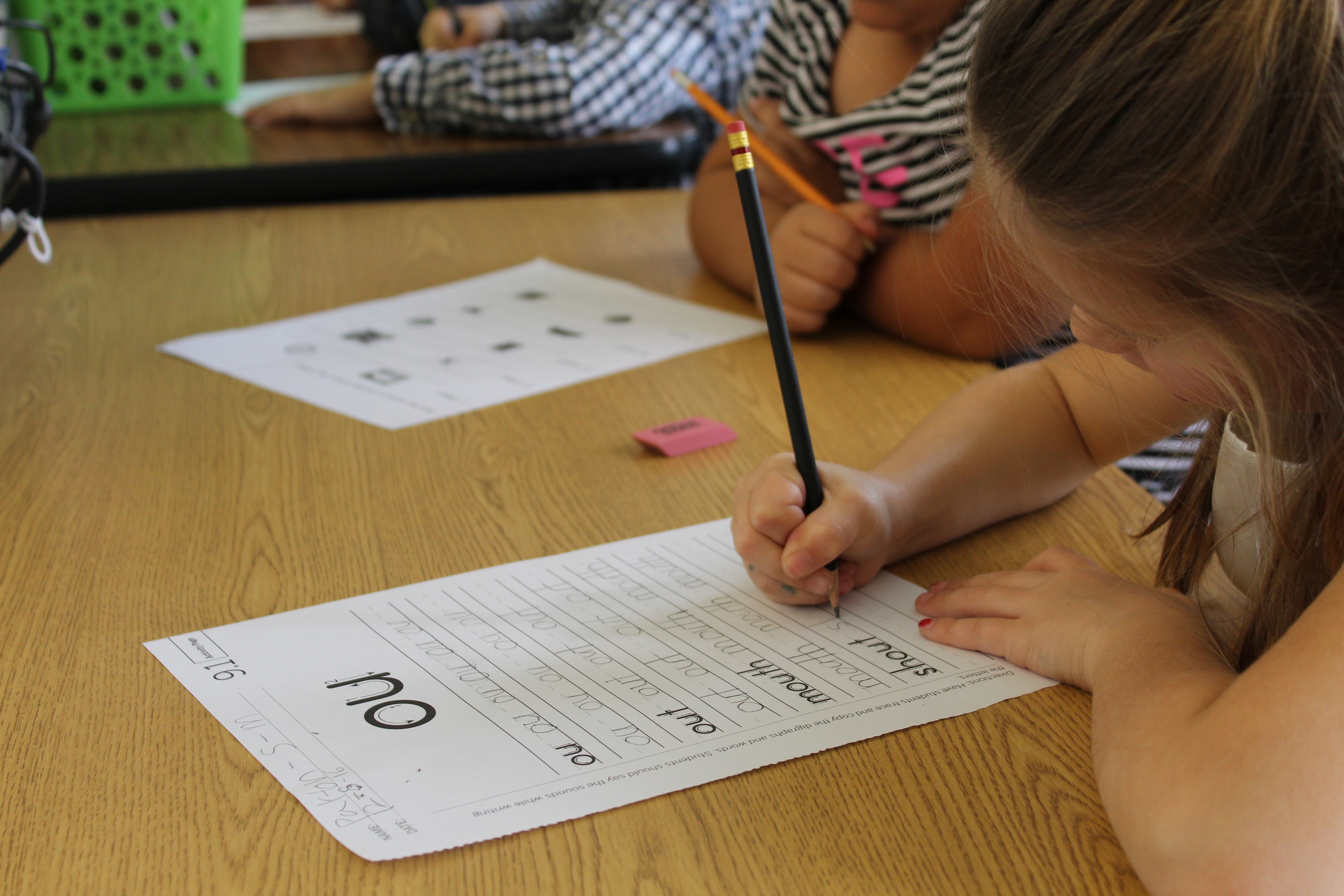Introduction by Amplify staff...
How can we inspire joy in learning? Another more concrete, actionable way to answer that question is: how can we get students to enjoy school? Let’s face it: a concrete, actionable—and provocative—question that will help unlock the answer is: Why don’t students enjoy school?
 Helpfully enough, that’s almost exactly the title of a revealing and often counterintuitive book by cognitive scientist Daniel T. Willingham, Ph.D. In Why Don’t Students Enjoy School? (Jossey-Bass, 2009), Willingham frames joy as pleasure, and connects that pleasure explicitly to the experience of solving a problem. (By “problem,” Willingham means “cognitive work that poses moderate challenge, including such activities as understanding a poem.”) In this excerpt, we see that some of our instinctive ideas around making learning “fun” or joyful—or at least not “boring”—may fall short, and that certain cognitive functions that may not be directly associated with joy and/or pleasure can be leveraged to trigger just that.
Helpfully enough, that’s almost exactly the title of a revealing and often counterintuitive book by cognitive scientist Daniel T. Willingham, Ph.D. In Why Don’t Students Enjoy School? (Jossey-Bass, 2009), Willingham frames joy as pleasure, and connects that pleasure explicitly to the experience of solving a problem. (By “problem,” Willingham means “cognitive work that poses moderate challenge, including such activities as understanding a poem.”) In this excerpt, we see that some of our instinctive ideas around making learning “fun” or joyful—or at least not “boring”—may fall short, and that certain cognitive functions that may not be directly associated with joy and/or pleasure can be leveraged to trigger just that.
Why Don’t Students Like School?
Excerpted from Chapter 1. Edited for clarity and flow. Emphasis added.
Why don't students like school, or perhaps more realistically, why don't more of them like it? Any teacher knows that there are lots of reasons that a student might or might not enjoy school. (My wife loved it, but primarily for social reasons.) From a cognitive perspective, an important factor is whether or not a student consistently experiences the pleasurable rush of solving a problem. What can teachers do to ensure that each student gets that pleasure?
Be Sure That There Are Problems to Be Solved
By problem I don't necessarily mean a question addressed to the class by the teacher, or a mathematical puzzle. I mean cognitive work that poses moderate challenge, including such activities as understanding a poem or thinking of novel uses for recyclable materials. This sort of cognitive work is of course the main stuff of teaching—we want our students to think. But without some attention, a lesson plan can become a long string of teacher explanations, with little opportunity for students to solve problems. So scan each lesson plan with an eye toward the cognitive work that students will be doing. How often does such work occur? Is it intermixed with cognitive breaks? When you have identified the challenges, consider whether they are open to negative outcomes such as students failing to understand what they are to do, or students being unlikely to solve the problem, or students simply trying to guess what you would like them to say or do.
Respect Students’ Cognitive Limits
When trying to develop effective mental challenges for your students, bear in mind the [potential] cognitive limitations. For example, suppose you began a history lesson with a question: “You’ve all heard of the Boston Tea Party; why do you suppose the colonists dressed as Indians and dumped tea into the Boston harbor?” Do your students have the necessary background knowledge in memory to consider this question? What do they know about the relationship of the colonies and the British crown in 1773? Do they know about the social and economic significance of tea? Could they generate reasonable alternative courses of action? If they lack the appropriate background knowledge, the question you pose will quickly be judged as “boring.” If students lack the background knowledge to engage with a problem, save it for another time when they have that knowledge.
Equally important is the limit on working memory. Remember that people can keep only so much information in mind at once. Overloads of working memory are caused by such things as multistep instructions, lists of unconnected facts, chains of logic more than two or three steps long, and the application of a just-learned concept to new material (unless the concept is quite simple). The solution to working memory overloads is straightforward: slow the pace, and use memory aids such as writing on the blackboard that save students from keeping too much information in working memory.
Clarifying the Problems to Be Solved
How can you make the problem interesting? A common strategy is to try to make the material “relevant” to students. This strategy sometimes works well, but it’s hard to use for some material. A teacher’s class may include two football fans, a doll collector, a NASCAR enthusiast, a horseback riding competitor—you get the idea. Mentioning a popular singer in the course of a history lesson may give the class a giggle, but it won’t do much more than that. Our curiosity is provoked when we perceive a problem that we believe we can solve.
What is the question that will engage students and make them want to know the answer? One way to view schoolwork is as a series of answers. We want students to know Boyle’s law, or three causes of the U.S. Civil War, or why Poe’s raven kept saying, “Nevermore.” Sometimes I think that we, as teachers, are so eager to get to the answers that we do not devote sufficient time to developing the question. But [cognitively speaking,] it’s the question that piques people’s interest. Being told an answer doesn’t do anything for you.
I could have organized this book around principles of cognitive psychology. Instead I organized it around questions that I thought teachers would find interesting. When you plan a lesson, you start with the information you want students to know by its end. As a next step, consider what the key question for that lesson might be and how you can frame that question so it will have the right level of difficulty to engage your students and so you will respect your students ’cognitive limitations.
Reconsider When to Puzzle Students
Teachers often seek to draw students into a lesson by presenting a problem that we believe will interest the students (for example, asking, “Why is there a law that you have to go to school?” could introduce the process by which laws are passed), or by conducting a demonstration or presenting a fact that we think students will find surprising. In either case, the goal is to puzzle students, to make them curious. This is a useful technique, but it’s worth considering whether these strategies might be used not only at the beginning of a lesson but also after the basic concepts have been learned.
For example, a classic science demonstration is to put a burning piece of paper in a milk bottle and then put a boiled egg over the bottle’s opening. After the paper burns, the egg is sucked into the bottle. Students will no doubt be astonished, but if they don't know the principle behind it, the demonstration is like a magic trick—it’s a momentary thrill, but their curiosity to understand may not be long-lasting. Another strategy would be to conduct the demonstration after students know that warm air expands and cooling air contracts, potentially forming a vacuum. Every fact or demonstration that would puzzle students before they have the right background knowledge has the potential to be an experience that will puzzle students momentarily, and then lead to the pleasure of problem solving. It is worth thinking about when to use a marvelous device like the egg-in-the-bottle trick.
Change the Pace
We all inevitably lose the attention of our students, and as this chapter has described, it’s likely to happen if they feel somewhat confused. They will mentally check out. The good news is that it’s relatively easy to get them back. Change grabs attention, as you no doubt know. When there’s a bang outside your classroom, every head turns to the windows. When you change topics, start a new activity, or in some other way show that you are shifting gears, virtually every student’s attention will come back to you, and you will have a new chance to engage them. So plan shifts and monitor your class’s attention to see whether you need to make them more often or less frequently.
Keep a Diary
The core idea presented in this chapter is that solving a problem gives people pleasure, but the problem must be easy enough to be solved yet difficult enough to take some mental effort. Finding this sweet spot of difficulty is not easy. Your experience in the classroom is your best guide—whatever works, do again; whatever doesn’t, discard. But don't expect that you will really remember how well a lesson plan worked a year later. Whether a lesson goes brilliantly well or down in flames, it feels at the time that we’ll never forget what happened; but the ravages of memory can surprise us, so write it down. Even if it’s just a quick scratch on a sticky note, try to make a habit of recording your success in gauging the level of difficulty in the problems you pose for your students.
Share this post

.png)

